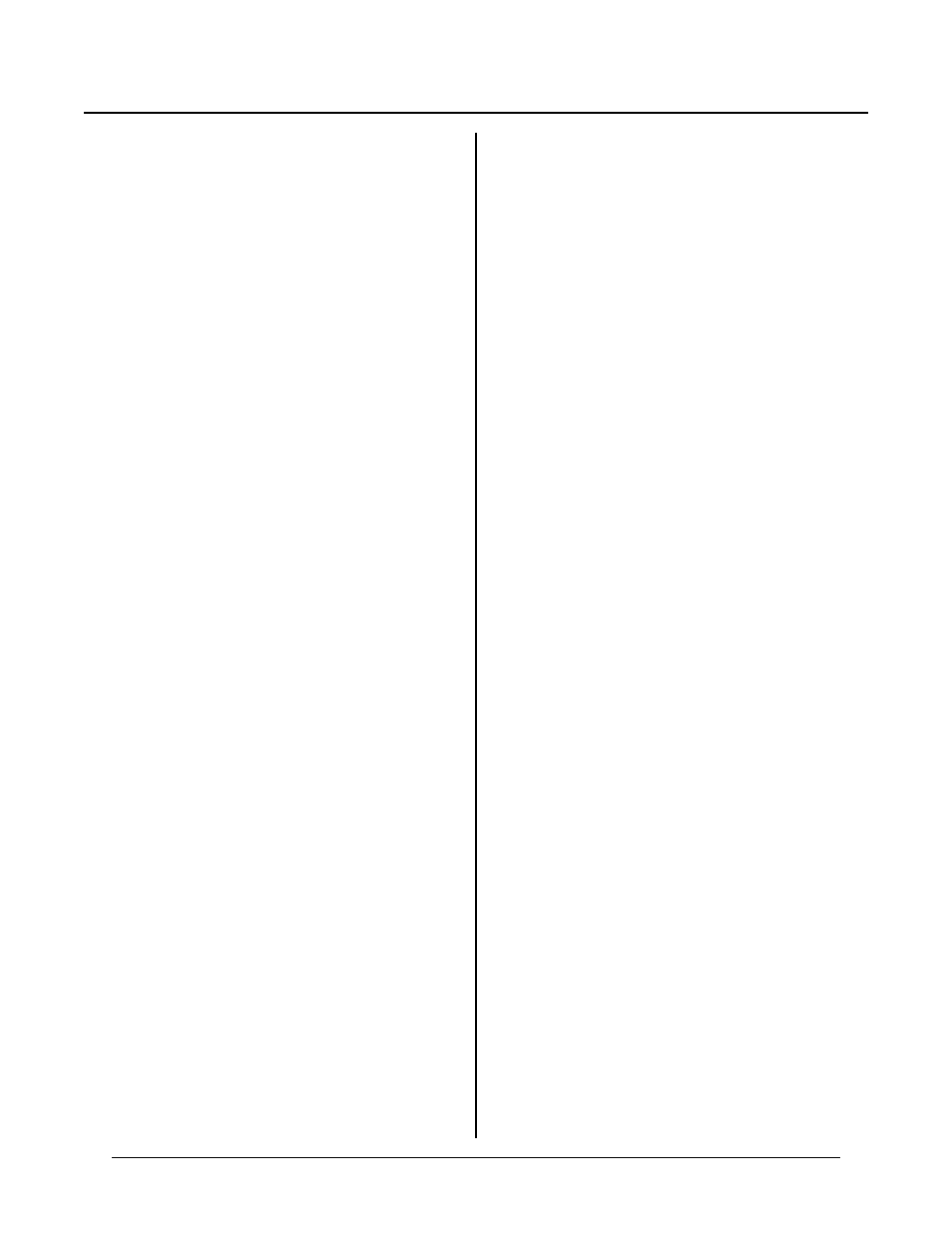Chapter 15 graphic display port – Remote Processing RPC-2350 User Manual
Page 68

CHAPTER 15
GRAPHIC DISPLAY PORT
15-7
graphics.
When saving to Flash, you m ust round UP the amount
stored to the next Flash sector size. A 128K flash sector
size is 128. A 512K flash sector size is 256. If you are
unsure w hat you will use in the future , use the 256 byte
sector size.
The following example shows how to determine the
number of bytes to store to a sector into Flash.
Assume you have calculated your graphic memory
requirement. For this example, we will use 3094 (from
the previous example). D ivide this number by 256
3094 / 256 = 12.085
Rounding up 12.085 gives us 13. T his is the number of
sectors needed for saving to flash.
The num ber of by tes is determ ined by m ultiplying this
number by sector size.
13 * 256 = 3328
This graphic will use 3328 bytes of flash memory. If
you are saving multiple graphics of the same size, you
can use this number as an offset for each graphic, or
picture, in the SAVE command.
SAVE s,3328 * PIC,1,0,3328
For the above example, s is the segment number (8 or 9
or 8 to 15, depending on mem ory size), PIC is the
picture number.
Since each segment = 65.536, you can hold 19 pictures
in 1 segme nt.
Wher e you save graph ics depends upon sever al factors,
one of them being how you intend to use graphics. The
second factor is the size of the gr aphics.
You will have to make a mem ory map of what you want
to save to RAM and FLASH. Start by determining what
you want to save. If you want to data log, set aside
some mem ory for that. If you need to store a second
progr am, allow for that. D on’t forge t that graph ic fonts
are stored in segment 9, address &AC00. If you are
using the supplied fonts, you should not save data there.
Medium sized fonts are stored in segm ent 9 from ad dress
&AC 00 - &B7FF. Large fonts are stored from &B800
to &FF FF. If you use one font, but not the other, you
can write in the unused area.
ADDITIONAL SCREEN CONTROLS
The display is capable of other display modes. Some are
listed here, others are in the SED1335 technical manual
(File:M 133XF. PDF ). This is a complicated chip, and
capable of many operating modes. We do not support
progr amm ing this chip exce pt as explained in this
manua l.
Changing cursor size or form
Default cursor type is a block type. This can be changed
to an underline or smaller size.
Execute the following code to change the cursor width,
h e ig h t, a n d f o rm .
OUT
&F9,&5D
OUT
&F8,width
OUT
&F8,height OR form
width is in the range of 0 to 6. 0 gives a 1 pixel width.
form determ ines if it is an under line or bloc k. L ogically
OR &80 to height for a block cursor.
height is in the range of 0 to 6. 0 gives a 1 pixel he ight.
Screen flashing and screen ON/OFF
CAM BASIC sets the cursor flash rate at 1/second. It
c a n f la s h f a st e r, b u t i t i s n o t a s vi si bl e o n th e L C D
display. You can also flash the character and graphics
screens.
DISPLAY ON
and DISPLAY OFF control the entire
display or graphics and character screens individually.
Since cursor and screen flashing are controlled by the
same byte, you will have to control them as described
below if you want to flash scr eens.
The par ameter by te is made up of sever al components.
Refer to the SED1335 P DF file, section 3.3.1, for
detailed information. The following are parameter
information you may need to know. The section number
and name are given first, followed by an explanation.
3 . 3 . 1 . 1 D
This is bit 0 of the c omm and. Writing a &58 to
address &F9 tur ns off the display.
The following make up the parameter byte following the